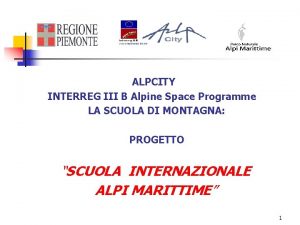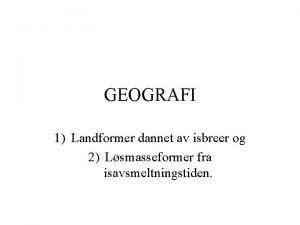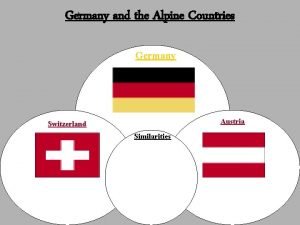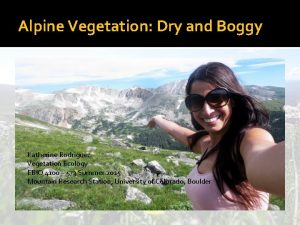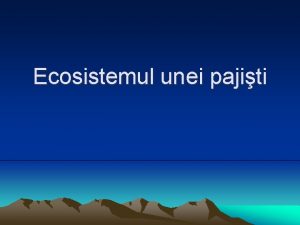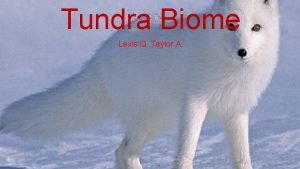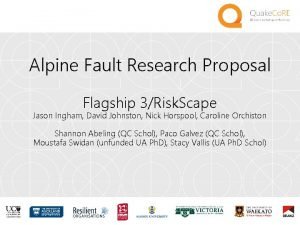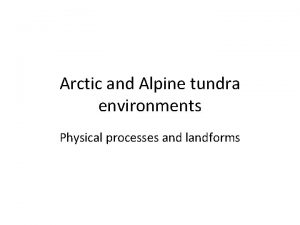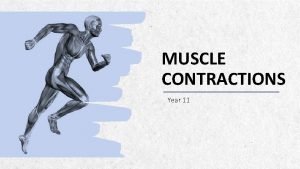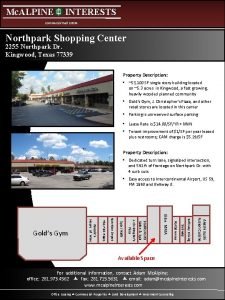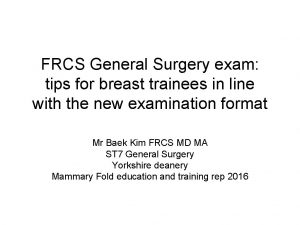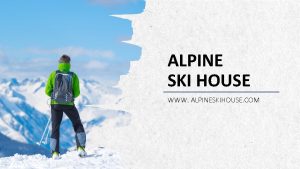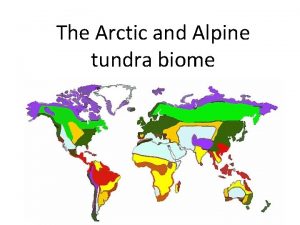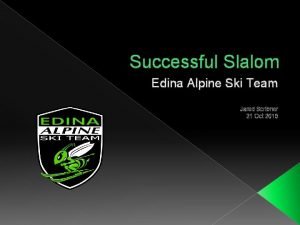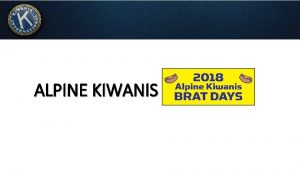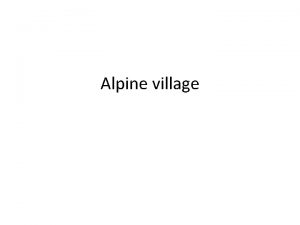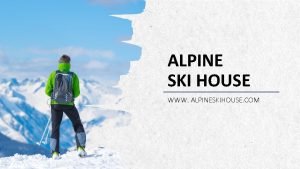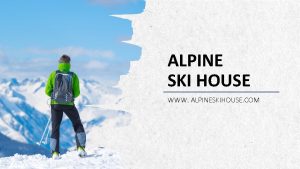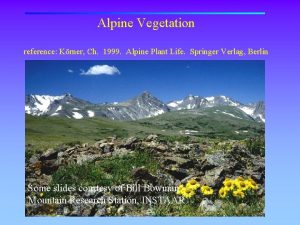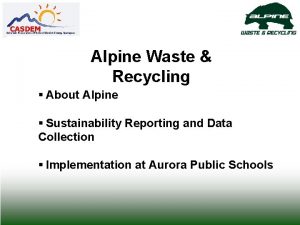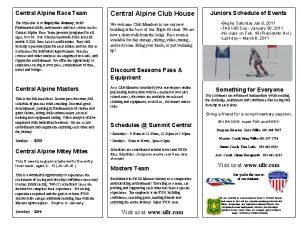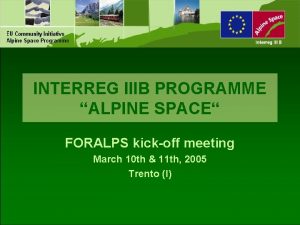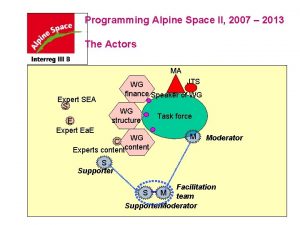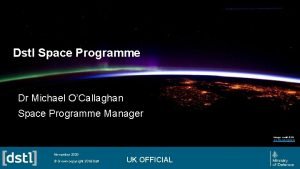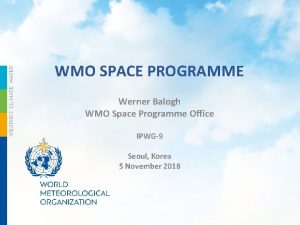Preparation of the Alpine Space II programme 2007
















- Slides: 16

Preparation of the Alpine Space II programme 2007 -2013 First results of the SWOT analysis Alpine Space Summit – June 19 th-20 th, Stresa INGEROP – URBAN PLANNING INSTITUTE OF THE REPUBLIC OF SLOVENIA ALPINE SPACE II - SWOT analysis slide 1

1 - General frame of the SWOT analysis q The Strength / weaknesses – Opportunities / threats analysis (SWOT) has been required by the European Commission to prepare the next generation of transnational programmes 2006 – 2013 q. The SWOT is the first step for defining strategy and priorities for the programme and afterward a matching set of indicators enabling to follow up the programme. ALPINE SPACE II - SWOT analysis slide 2

1 - General frame of the SWOT analysis q. The SWOT method applied to the Alpine Space has a number of characteristics: Øa strategy building tool üUnlike a full length diagnosis, it is a rather short document enabling to set a synthesis of a wide range of information encompassing different scales and sector aspects of the cooperation area. Its items enable to draw the main relevant issues of the cooperation area and are a direct input to formulate the strategy and the priorities. Øa capital of knowledge üThe inputs of the SWOT are among others the former operational programme, the prospective study, the mid term evaluation, the transnational projects carried out, ESPON studies etc. ALPINE SPACE II - SWOT analysis slide 3

1 - General frame of the SWOT analysis Øa participative bottom –up method üIt enables different Alpine stakeholders to express their point of view over the Alpine Space. This upstream association of stakeholders (notably through national consultations) is aimed at producing a shared analysis of the Alpine Space, which is a prerequisite for shared strategy and priorities. The point is to enable Alpine stakeholders to consider the Alpine Space programme as a practical development tool taking into account their preoccupations and matching with their projects. ALPINE SPACE II - SWOT analysis slide 4

1 - General frame of the SWOT analysis Øalso a top – down approach üIt identifies the different relevant aspects of the cooperation area according to European strategies or frames. To that purpose an “inventory SWOT” has been set and put the Alpine Space in the perspective of the Lisbon strategy, the Gothenburg strategy and spatial cohesion (according to a frame set by ESPON). ALPINE SPACE II - SWOT analysis slide 5

1 - General frame of the SWOT analysis q. The risk of such a method might be its subjectivity and its synthetic approach. ØSubjectivity can be reduced through the consultation of different stakeholders and through a progressive process based on exchanges and reactions among a reasonable wide set of actors. ØThe SWOT is completed with a more quantitative analysis based on ESPON studies. ALPINE SPACE II - SWOT analysis slide 6

2 - A first inventory SWOT has been set in order to analyse the Alpine Space through the categories of the main European strategies : q ØLisbon strategy : growth, employment and competitivity, ØGothenburg strategy : sustainable development, ØTerritorial cohesion : ESPON frame. ALPINE SPACE II - SWOT analysis slide 7

2 - A first inventory SWOT q Basis for sustainable growth Economic assets territorial balance of growth Environmental sustainability Social sustainability and human capital Economic infrastructures and resources Transports Energy Natural resources (water, landscapes etc. ) Basis for a knowledge economy Education Knowledge infrastructures Human capital Research and innovation research centres networking Insertion in a global economy ALPINE SPACE II - SWOT analysis slide 8

2 - A first inventory SWOT Gothenburg strategy Climate change and clean energy Public health Social exclusion, demography, migration ALPINE SPACE II - SWOT analysis slide 9

2 - A first inventory SWOT Territorial efficiency Inter-regional integration Efficient and polycentric urban system Development of city-networks and medium cities Compact city form, reduction of sprawl General accessibility Sustainable transport: share of public transport and absence of congestion Quality of transport and communication services Resource efficiency: consumption of energy, land, water etc. Reduction of technological and environmental risk ALPINE SPACE II - SWOT analysis slide 10

2 - A first inventory SWOT Territorial quality Conservation and creative management of natural resources Access to services of general interest Quality of life and working conditions Reduction of interregional income disparities Cooperation between city and countryside Territorial identity Conservation and creative management of cultural heritage Development of region-specific know-how and knowledge Development of territorial "vocations" and "visions" ALPINE SPACE II - SWOT analysis slide 11

3 – Main issues raised through the SWOT A second version of the SWOT has been produced according to the following categories : q ØGrowth, competitiveness and innovation, ØTerritorial structure, ØAccessibility and mobility, ØEnvironment, resources and risks. ALPINE SPACE II - SWOT analysis slide 12

3. 1 Growth, competitiveness and innovation q q Strengths üStrong and diverse economy üMetropolitan areas (“growth engines”)+ network of cities üSpecific productive cultures üEnvironment as a key productive factor üUniversities and research centres (public and private) Weaknesses üWeaknesses in some sectors üSmall scale territorial discrepancies üMobility and environmental impacts of growth Opportunities üBasis for innovation (PPP, competitivity clusters, know how…) üTourism diversification Threats üSpecific threats for some sectors (industry or tourism) üCompetition between agriculture and tourism ALPINE SPACE II - SWOT analysis slide 13

3. 2 Territorial structure q q Strengths ü Central location in Europe ü Strong metropolitan areas and dense network of medium and small cities ü Small scale city networks ü Traditionally compact cities ü Successful core areas Weaknesses ü Distinction between prosperous areas (northern and southern parts of the AS) and not so rich areas (central and eastern parts) ü Small scale territorial discrepancies (remote areas, rural areas, tourist resorts etc. ) ü Lack of city networks at wide scale q q Opportunities ü Development of networks (transports, ICT) ü Wider city networks Threats ü Increasing discrepancies at small scale ü Gaps in the urban hierarchy ü Abandonment of some remote rural areas ü Urban sprawl ALPINE SPACE II - SWOT analysis slide 14

3. 3 Accessibility and mobility q. Strengths üGood level of accessibility within Europe üGood regional transport systems q Weaknesses üLinks between major metropolitan areas üAccessibility within the Alpine core is unequal (remoteness) üGrowth of transports through road and individual means üImpacts of transports, especially in some transit areas q Opportunities üMass transport systems for freight üInnovative transport solutions q Threats üCosts of congestion (economical, environmental, social) üLittle incentive for growth of further transport investments ALPINE SPACE II - SWOT analysis slide 15

3. 4 Environment, resources and risks Strengths üRich natural and cultural resources (landscapes etc. ) üAbundant resources (e. g. water) üRenewable energies üRather low general exposition to natural hazards q Weaknesses üConflicts of use (water, land consumption…) üNatural hazards in specific areas (valleys, mountain core) üProtection : how much and how large ? q Opportunities üValorisation of heritage üDevelopment of renewable energies q Threats üDiminishing diversity üPressure or inefficient use of resources üClimate change (water, natural hazards etc. ) q ALPINE SPACE II - SWOT analysis slide 16
 Interreg iii b
Interreg iii b Midtmorene
Midtmorene Germany and the alpine countries
Germany and the alpine countries Alpine vegetation
Alpine vegetation Ecosistemul unei pajisti alpine
Ecosistemul unei pajisti alpine Tundra region map
Tundra region map Alpine fault simulation
Alpine fault simulation Alpine tundra landforms
Alpine tundra landforms Alpine ski house
Alpine ski house Alpine commercial real estate agent
Alpine commercial real estate agent Frcs general surgery questions
Frcs general surgery questions Alpine ski house microsoft
Alpine ski house microsoft Alpine
Alpine Key characteristics of alpine biome
Key characteristics of alpine biome Edina alpine ski team
Edina alpine ski team Minneapolis alpine ski team
Minneapolis alpine ski team Alpine
Alpine
